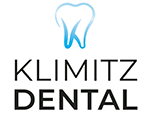What is it?
A crown is a full coverage restoration that is cemented on top of prepared tooth structure to replace, restore or enhance a tooth to its previous shape and function. The crown is usually made out of a combination of gold, porcelain or ceramic.
Why do I need it?
A crown is usually recommended in the following circumstances:
- Over an endodontically treated tooth.
- To restore a tooth with a large filling to prevent tooth fracture.
- Trauma.
- To replace if there is recurrent decay.
- To replace a broken crown.
- To improve aesthetics.
- To correct a bite.
- Other cosmetic problems.
What does it involve?
Prior to initiating a crown
- Root canal therapy may be indicated.
- Crown lengthening may be indicated in some cases.
Preparing a crown involves:
1st appointment.
Reducing the existing tooth structure in order to achieve adequate retention.
- Taking impressions.
- Fabricating a temporary crown.
- Shade selection.
***In between the 1st and 2nd appointment a patient may choose to have custom staining completed by the lab.
2nd appointment.
- Removing the temporary crown
- Trying in the crown.
- Cementing the crown.
How successful is it?
Proper oral hygiene is critical to the long term success of a crown. Crowns are usually expected to last between 5-20 years. If the tissues surrounding the crown recede with time as patient ages a new crown may be needed for aesthetic reasons.
**Crowns usually have the longest lifespan of any restoration.**
What happens after?
Regular maintenance is critical, including a customized oral hygiene regiment and routine recall exams and cleanings which may range between 3-6 months as advised by the dentist.
Dental Bridge
What is it?
A bridge is a type of restoration that is used to replace missing teeth, to improve esthetics, function and to help maintain oral health. Missing teeth can lead to a variety of problems. When a tooth is lost, the surrounding teeth will actually shift. The adjacent teeth may tilt forward, and the opposing teeth may over-erupt. Even if just one tooth is lost, it can cause an increase in spaces between teeth, and change the bite and overall esthetics. This can also lead to changes in chewing function, promote decay due to changes in tooth contact, and may even promote periodontal disease. The standard of care to replace missing teeth is usually an implant, however alternatives to implants include bridges, and removable partial dentures.
Why do I need it?
A bridge is usually recommended in order to:
Replace a missing tooth
- Restore proper occlusion
- Reduce unusual stresses on other teeth
- Prevent over-eruption of opposing teeth
- Prevent shifting and tilting of adjacent teeth
- Prevent dental decay
- Prevent periodontal disease
What does it involve?
Prior to initiating a bridge
Root canal therapy may be indicated.
- Crown lengthening may be indicated in some cases.
- Proper assessment of the periodontal health of supporting teeth will be conducted.
Preparing a bridge involves:
1st appointment.
Reducing the existing tooth structure in order to achieve adequate retention of the adjacent teeth.
- Taking impressions.
- Fabricating a temporary bridge.
- Shade selection.
***In between the 1st and 2nd appointment a patient may choose to have custom staining completed by the lab.
2nd appointment.
- Removing the temporary bridge
- Trying in the bridge.
- Cementing the bridge.
How successful is it?
Proper oral hygiene is critical to the long term success of a bridge. Bridges are usually expected to last between 5-20 years as long as optimum oral hygiene is achieved. If the tissues surrounding the bridge recede with time as a patient ages a new bridge may be needed for aesthetic reasons.
What happens after?
Regular maintenance is critical, including a customized oral hygiene regiment and routine recall exams and cleanings which may range between 3-6 months as advised by the dentist. Oral care for a bridge includes, brushing after each meal, and flossing. It is critical to clean under the bridge using special floss to remove food debris and bacteria which may accumulate.
